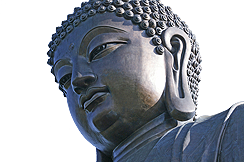WALKING IN THE FOOTSTEPS OF THE BUDDHA:
REVIVING THE BUDDHIST CULTURE OF INDIA
REVIVING THE BUDDHIST CULTURE OF INDIA
Wangmo and Richard Dixey
Light of the Buddhadharma Foundation International
 Walking in the Footsteps of the Buddha LBDFI Book
Walking in the Footsteps of the Buddha LBDFI Book
or
https://drive.google.com/file/d/1PTjv7ckfx5hLgkBG5X4NVlGe5KBKuJ8f/view
Light of the Buddhadharma Foundation International
 Walking in the Footsteps of the Buddha LBDFI Book
Walking in the Footsteps of the Buddha LBDFI Bookor
https://drive.google.com/file/d/1PTjv7ckfx5hLgkBG5X4NVlGe5KBKuJ8f/view
For nearly 1500 years, India was the world's richest country and a Buddhist superpower. The Pharaoh Ramesses I was recorded as having an Indian doctor, testifying to the antiquity of its medical traditions, but it was only when Alexander the Great turned around on the banks of the Indus River that the West first learned of the power of the Buddhist empire of ancient India. At that time, its capital, Pataliputra, was five times the size of Rome, with 100 miles of city walls on the edge of the Ganges. In the centuries that followed, the wealth of this country far to the east was known to the Romans, and the world's first international university at Nalanda acted as a magnet for scholar monks from all over the Asian region. Formal logic was developed there, along with the first skeptical philosophies, a thousand years before any western equivalent. But the Buddhist culture of India began to erode, attacked from within by reactionary forces and from without by invasion. Although the teachings of the Buddha had spread widely to every other Asian country, eventually they were eradicated in India itself, and by the medieval period even Bodhgaya, the center of the Buddhist enlightenment, was lost in ruins. A recovery of this culture has been underway for 100 years. The archaeological excavation of the Buddhist heartland began in the late nineteenth century, and the Mahabodhi Temple was rebuilt in the 1880s. Following Indian independence, Buddhist symbols featured prominently, both on the national flag and the currency. The architect of the Indian Constitution, PK Ambedkar, became Buddhist with many of his followers in the 1950s. Slowly monks have returned, and Buddhist nations have created outpost temples in many of the major sites of pilgrimage. Largely supported by national governments, however, no truly international effort was undertaken. It was against this backdrop that the Light of Buddhadharma International (LBDFI) was founded, to revitalize the Buddhist culture in India and to work with all the Southeast Asian countries to bring the full flowering of the Buddhadharma back to its ancient homeland.
- Từ khóa :
- English



